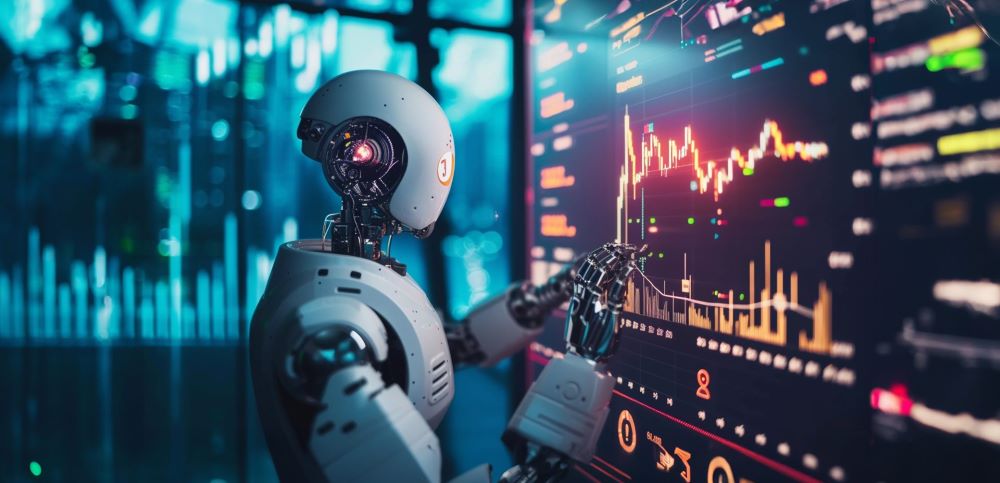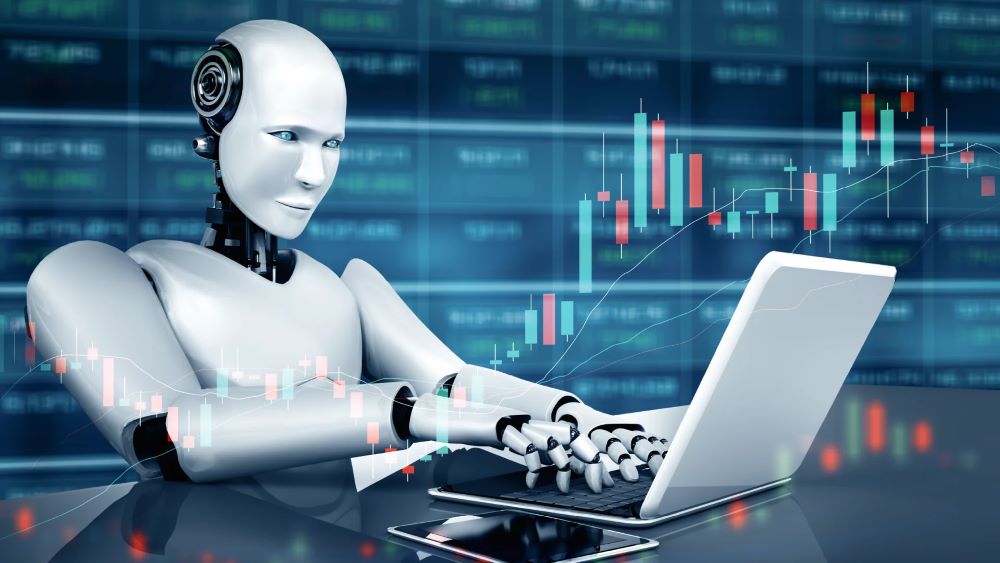
7 Tips For Using AI Powered Trading Bots In Financial Investing
As artificial intelligence continues to reshape the financial world, AI powered trading bots are quickly becoming a go to tool for investors seeking speed, precision, and automation. But while these intelligent systems offer exciting advantages, they’re not a magic solution. Before diving in, it’s essential to understand how they work, what risks they carry, and how to use them wisely. In this article, we’ll walk you through 7 important tips to help you get the most out of AI trading bots and avoid costly mistakes along the way.
Contents
- 1 What Are AI powered trading bots?
- 2 Practical applications of AI powered trading bots
- 3 Popular types of AI powered trading bots
- 4 How AI powered trading bots make trading decisions
- 5 Criteria for evaluating effective AI powered trading bots
- 6 Challenges when using AI powered trading bots
- 7 The future trend of AI powered trading bots in the financial market
What Are AI powered trading bots?
AI powered trading bots are automated software programs that use artificial intelligence to analyze market data, predict trends, and execute trades on behalf of humans. Unlike traditional trading bots that operate based on fixed rules, these bots can learn from historical data, adapt to market fluctuations, and make smart decisions in real time. They are designed to run 24/7, helping investors seize opportunities across stock markets, cryptocurrencies or forex even while they sleep.
What sets AI trading bots apart is their ability to process massive volumes of data that would be impossible for humans to handle manually. From analyzing price charts and financial news to interpreting trading behavior, AI bots deliver superior performance in identifying optimal buy and sell moments.
Practical applications of AI powered trading bots
Artificial intelligence (AI) is rapidly becoming an indispensable tool in financial trading. With the ability to process massive amounts of data in a very short time, AI enables bots to automatically detect market patterns, forecast trends, and execute trades without manual intervention. This allows investors to seize timely opportunities, especially in fast moving markets like crypto and forex. Automation not only saves time but also helps reduce emotional bias in decision making.
One of the most prominent applications of AI is advanced technical analysis. By interpreting indicators such as RSI, MACD, and trading volume, bots can objectively evaluate trends based on historical data. In addition, AI supports investors by consolidating information from multiple sources like price charts, market data, and financial news. This provides users with a solid foundation to reinforce their trading strategies. It’s a major step toward making trading more data-driven and reliable.
Beyond technical analysis, AI powered trading bots are also used to understand market sentiment, a factor that has long been difficult to quantify. By scanning and analyzing content from social media, news articles, forums, and even search trends, AI can assess investor sentiment in real time. In crypto trading, AI is also integrated with on-chain data to detect signals from large fund movements or unusual activity. However, not all AI systems are equally effective. Choosing the right trading bot depends on data quality, algorithm accuracy, and the system’s ability to adapt to ever changing market conditions.
Popular types of AI powered trading bots
Today, AI powered trading bots come in many forms and are no longer limited to a single model. Each type is developed based on specific usage goals and investment strategies. Among them, deep learning bots are some of the most prominent. They learn from historical market data and continuously improve their price prediction capabilities. Neural networks help them identify complex patterns that humans might overlook.
Another group includes bots based on statistical AI models, using algorithms like linear regression, decision trees, or Bayesian networks. These bots process data such as price, volume, and technical indicators to make high probability trading decisions. There are also supervised learning bots, trained using labeled data to recognize market situations. As a result, they can react flexibly when market conditions shift. Their ability to learn from past data helps them take appropriate actions.
Notably, many modern AI bots can adjust their strategies in real time. When market trends change, they update their algorithms to stay aligned. Each type of bot has its strengths but also comes with limitations. Choosing the right one should be based on your understanding and specific investment goals. Don’t choose a bot just because it’s popular, choose it because it suits you.
How AI powered trading bots make trading decisions
One of the key differences between AI powered trading bots and traditional trading systems lies in how they process data. Instead of acting randomly, each buy or sell order is the result of thorough analysis. These bots gather information from multiple sources such as market prices, trading volume, technical indicators, and financial news. Then, AI models like machine learning or deep learning evaluate the data to identify reliable trading signals. Every decision is based on probability, free from the emotional influence that often affects human traders.
Some modern AI trading bots are also equipped with reinforcement learning technology, enabling them to adjust based on previous trading outcomes. This allows the bots to adapt more effectively to market fluctuations and improve performance over time. However, AI is not infallible if the input data is flawed, the results can be inaccurate. That’s why investors shouldn’t rely solely on these tools but should maintain overall control of their strategies. AI should be viewed as a smart assistant, not a complete replacement for human judgment.
Criteria for evaluating effective AI powered trading bots
Not all AI powered trading bots are reliable, so it’s important to evaluate them thoroughly before using one. First, consider the accuracy of its predictions, a good bot should learn from current market data, not just rely on historical patterns. If the bot frequently gives inaccurate signals or only performs well in specific market conditions, that’s a red flag. Next is its ability to adapt to market volatility, as financial markets are constantly changing. Bots that are rigid and don’t update their algorithms can expose your account to unnecessary risks.
Transparency is another crucial factor, you should understand how the AI trading bots operate, what data they use, and whether their strategies can be adjusted. A quality bot gives users the flexibility to customize strategies, set risk levels, and manage capital clearly. Don’t forget to check the security of the platform providing the bot, ensuring your assets and data are protected. It’s best to choose developers with an active user community and a proven track record. Lastly, don’t fall for flashy marketing, base your decision on real experience and informed judgment.
Challenges when using AI powered trading bots
Although AI powered trading bots bring many advantages, they’re not flawless solutions. One major challenge is cost, high quality bots often come with high subscription or purchase fees. On top of that, trading fees on exchanges can quickly add up. Without proper optimization, these bots may cause substantial losses in volatile markets.
Another issue lies in their heavy dependence on data quality. If the input data is inaccurate or if unexpected market events occur, bots can make poor decisions. Events like black swan scenarios are difficult for AI to predict. That’s why regular monitoring and manual adjustments are essential to ensure stable performance.
The future trend of AI powered trading bots in the financial market
AI powered trading bots are gradually becoming an essential part of the modern financial ecosystem. As markets grow more volatile and data becomes increasingly abundant, the demand for automated tools capable of quickly processing information and making accurate decisions is also rising. With the ability to continuously learn from real-world data, these bots not only optimize trading strategies but also help investors respond promptly to market fluctuations. The advancement of deep learning and big data technologies will further enhance the performance and adaptability of AI bots.
In the future, AI trading bots may incorporate even more advanced features, such as market sentiment analysis, real time news based predictions, and personalized strategies tailored to individual user behavior. As artificial intelligence continues to evolve, integrating AI into financial trading will open up new possibilities for more accurate and efficient investments. However, along with these opportunities come challenges related to security, ethics, and risk management. Understanding the technology and using it responsibly will be key for investors to fully leverage the benefits that AI can offer.
To stay updated with practical insights, trend analysis, and the right platform choices, you can follow Best AI Trading Bot, a trusted source for valuable and reliable information in today’s dynamic trading landscape.




